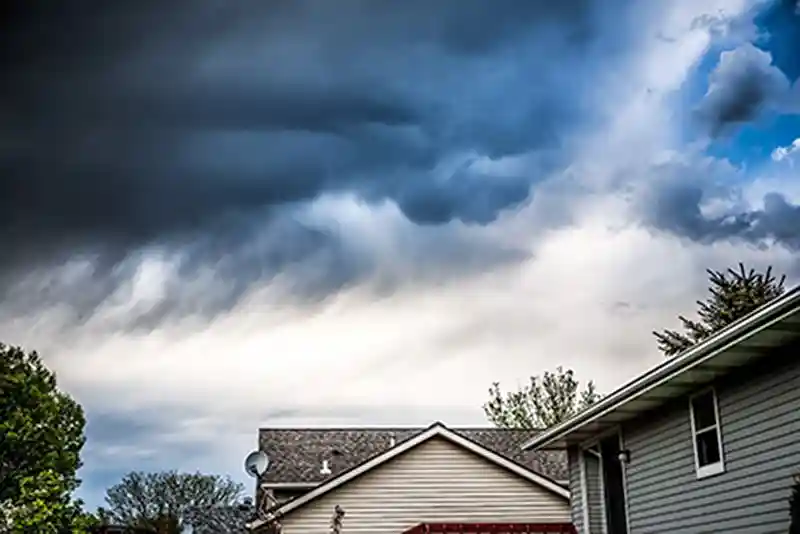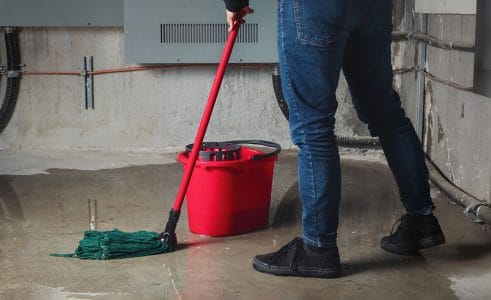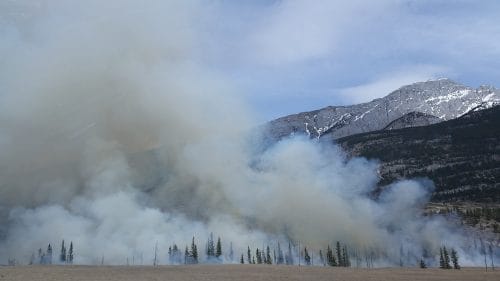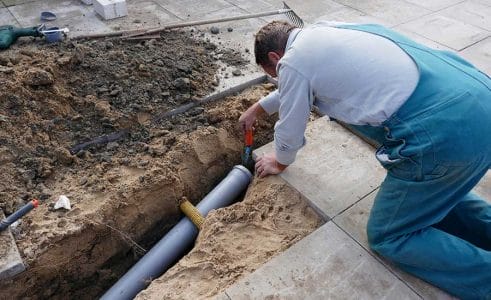Thunderstorm Preparedness

There are an estimated 100,000 thunderstorms each year in the United States. Unlike hurricanes and tornadoes, which are largely limited to certain regions, thunderstorms can occur everywhere in the country.
Perhaps because thunderstorms are so commonplace, many people don’t consider their potentially destructive nature as a major threat.
However, these storms are some of the most common causes of property damage every year.
In fact, lightning damage alone costs U.S. property owners around $1.3 billion per year. That doesn’t include the damage caused by strong winds or flooding from heavy rainfall.
Although thunderstorms can cause severe and costly damage to properties, with the proper preparation, you can keep your home, your business, and yourself safe from these destructive storms.
Common Types of Thunderstorm Damage
One reason thunderstorms can be so destructive is that they can cause several different types of property damage. Thunderstorm-related property damage can include lightning damage, wind damage, hail damage and flooding.
Lightning Damage
Damage from lightning is one of the most common causes of property damage during a thunderstorm. When lighting strikes a building, it can start fires or cause damage to structural elements such as walls, concrete, glass, and plaster. Lightning strikes can also damage plugged-in appliances if the shock travels down electrical wiring. If trees or other objects in the yard are struck by lightning, it can cause debris to shoot through the air, which often results in further exterior damage.
Wind Damage
Wind is another one of the most common causes of weather-related property damage. During a severe thunderstorm, winds can reach speeds over 100 mph. Even with much lower wind speeds, tree branches, lawn furniture, and other loose items can become projectiles. When these objects are thrown around in the wind, they can break windows, dent siding, and cause other exterior property damage. Perhaps most commonly, strong winds can bring down large limbs and trees, which can cause serious damage to roofs and entire structures. Strong winds and falling trees can also lead to downed power lines, which can cause dangerous electrical shocks and start fires.
Hail Damage
Severe thunderstorms are often accompanied by hail, which can cause damage to almost every exterior area of a property, from walls and siding to roofs and windows. Furthermore, the larger the hail falling, the more likely it is to cause significant damage to property. More information on wind and hail damage can be found on our wind and hail preparedness page.
Flooding
When thunderstorms produce heavy rains in a short period of time, flash flooding can occur. Steady or heavy rain from storms over a longer period of time can also lead to areal flooding. Both types of flooding can cause property damage. When flooding gets into a home, it can result in costly damage to walls, floors, carpets, and furniture. Additional information on floods can be found on our flood damage page.
How To Prepare For A Thunderstorm
Although thunderstorms can cause a variety of damage to homes and businesses, taking the proper precautions can help limit the amount and severity of property damage they cause. In order to better protect your property during a thunderstorm, here are several steps you can take before a storm occurs and as part of your regular maintenance:
- Install storm shutters to prevent windows from breaking due to strong winds or blowing debris.
- Use surge protectors to prevent electronic equipment from becoming fried due to a lightning strike.
- Secure outdoor furniture and other loose items to keep them from blowing around in strong winds.
- If any trees on your property hang over power lines, prune them annually to help prevent falling limbs and downed lines during a thunderstorm.
- Ensure all drainage systems on your property, including gutters, are free of clogs and working properly to avoid flooding and water damage.
How To Stay Safe During A Thunderstorm
While taking the necessary steps to protect your property can help to limit damage to your home or business during a storm, you also need to take steps to protect yourself. Here are several things to keep in mind during thunderstorms:
- If outside, get inside as quickly as possible. Do not take shelter under a tree as they can be struck by lightning, causing serious harm to those in the vicinity.
- Pay attention to alerts and follow all warnings.
- Stay away from bodies of water and avoid activities that require running water such as washing dishes or showering.
- Do not use electronic devices that are plugged into outlets without surge protectors.
- Avoid driving if at all possible. If you are driving, find a safe place to stop, and do not attempt to drive through any flooded roadways. Look out for fallen tree branches and downed power lines.
Thunderstorm FAQs
What causes storms?
A severe thunderstorm warning is a weather warning issued by the National Weather Service to indicate a severe storm is imminent or occurring in the vicinity. This is different from a severe thunderstorm watch, which suggests a storm is possible, but not yet occurring in the area. Remember that severe thunderstorms can produce hail, excessive wind speeds, straight-line winds, and tornadoes with little to no warning.
What does “isolated thunderstorm” mean?
An isolated thunderstorm is classified by the National Weather Service as a specific location with less than a 30% chance of measurable precipitation.
What does “scattered thunderstorms” mean?
Scattered thunderstorms are classified by the National Weather Service as a specific location with a 30% to 50% chance of measurable precipitation.
Is it safe to shower during a thunderstorm?
Because lightning can travel through plumbing, it is best to avoid all water-based activities during thunderstorms. This includes showering, washing your hands, and doing the dishes.
Is it safe to drive during a thunderstorm?
If a storm is coming, it is best to remain in your current location rather than attempting to drive through it. Thunderstorms can result in poor visibility, flooded roadways, fallen tree branches, and downed power lines. Wet roads also make it more difficult to safely control an automobile. Therefore, it is best to refrain from driving during a thunderstorm.
Is it safe to be outside during a thunderstorm?
Lightning and blowing debris can cause severe harm to humans, including death. Therefore, do not go outside during a thunderstorm. If you are stuck outside when a storm moves in, you can take the following measures to limit the threat of lightning:
- Get off of elevated areas, like hills and mountain ridges.
- Get low to the earth, but do not lie down. Crouch in a ball so that just your feet are touching the ground with your head tucked in and hands over your ears.
- Do not take shelter under isolated trees, cliffs, or rock overhangs.
- Get out of and away from pools, ponds, lakes, and other bodies of water immediately.
- Get away from objects that conduct electricity like fences, signposts, poles, and power lines.
Recovering From Thunderstorm Damage With BELFOR
If your home or business suffers damage during a thunderstorm, it is important to act quickly to prevent further damage from occurring. Check out our storm clean-up and recovery page to learn more about our thunderstorm damage restoration services.
Some of our common storm damage mitigation and restoration services include:
- Emergency Board-Ups
- Perimeter Fencing
- Building Shrink Wrap
- Emergency Security Personnel
- Demolition and Reconstruction Services
You can find your local BELFOR office on our locations page or by downloading the BELFOR Mobile App.
.jpg)


